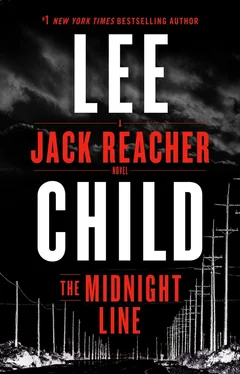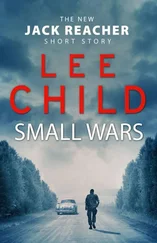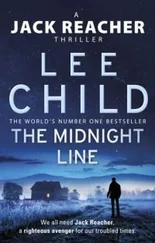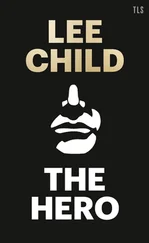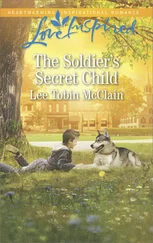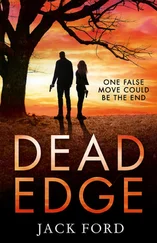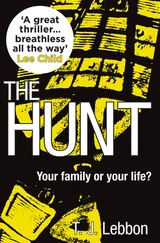It had Illinois plates.
He ducked back to the phone in the lobby and dialed Terry Bramall’s cell number from memory. The private eye from Chicago. Last seen leaving Rapid City in a black SUV with Illinois plates. There was a ring tone, but no answer. A voice came on and invited him to leave a message. He didn’t. He just shrugged and set out again for coffee.
—
He found coffee along with breakfast in a diner on Third Street. He asked the waitress where the county sheriff was based. She said right there in town, about half a mile away. Not hard to find. The sky was blue and the sun was shining but the air was cool. He stopped in at a clothing store. In his experience the West was better than the East for tall guys. He found jeans the right length, and a flannel shirt, and a thin canvas jacket. As always he changed in the cubicle and had the clerk dump his old stuff in the trash. Then he walked onward to the spot the waitress had told him, and found the sheriff’s office. It was a single-wide storefront, with the bottom part of the window painted over. Above that was a gold pinstripe, and above that was a gold star about two feet wide and two feet high, with the county’s name in a curve above, and Sheriff’s Department in a curve below. The design looked a little bit like the West Point ring.
He went in. There was a woman in civilian clothes at the reception desk. He asked to see the sheriff, and she asked why he wanted to. He said he had a question about an old case. She asked his name, and he told her. She asked if his visit was in some way official. Whether he worked in law enforcement. He said not currently, but he had been an MP in the army for thirteen years. She told him to go ahead upstairs to the sheriff’s office, which was the last door on the left. No hesitation. In his experience the West was better than the East for veterans.
He went upstairs. According to gold writing on the last door on the left the sheriff’s name was Connelly. Reacher knocked and entered. The office was a dusty wood-framed room gone a golden hue with age, and Sheriff Connelly himself turned out to be a solid leathery guy of about fifty. He was wearing blue jeans and a tan shirt and a Stetson hat. Clearly the woman at the desk had called ahead, because Connelly already knew his name. He said, “How can I help you, Mr. Reacher?”
Reacher said, “I came to Wyoming to look up a guy named Seymour Porterfield, but I’m told he got eaten up by a bear a year and a half ago. I was hoping you could tell me what you know about that.”
Connelly said, “Take a seat, Mr. Reacher.”
Reacher sat down, on an old-fashioned wooden visitor chair polished to a high shine by a thousand pairs of pants. Connelly looked at him without speaking. A level gaze, equal parts suspicion and the benefit of the doubt. He said, “What was your connection with Seymour Porterfield?”
“None at all,” Reacher said. “I’m looking for someone else, and I was told Porterfield might be able to point me in the right direction.”
“Who told you that?”
“A guy in South Dakota.”
“Who is the someone else you’re looking for?”
Reacher took the ring out of his new pants pocket, and said, “I want to return this to its rightful owner.”
“A woman,” Connelly said.
“Name of Serena Rose Sanderson. You know her?”
The guy shook his head. “She a friend of yours?”
“Never met her. But we look after our own.”
“You a West Pointer, too?”
“A long time ago.”
“Where did you find the ring?”
“In a pawn shop in Wisconsin. I traced it back to Rapid City, South Dakota. I was told it was brought there from Wyoming by Porterfield.”
“When?”
“After he was dead.”
“So how can I help you?”
“You can’t,” Reacher said. “But I’m curious. Getting eaten by a bear seems a little extreme.”
“Could have been a mountain lion.”
“How likely is that?”
“Not very,” Connelly said. “Either thing would be rare.”
“So what do you think happened?”
“A practical man would say the guy was gut shot or knifed in the stomach and then dumped in the woods. It was the end of winter. Bears or mountain lions might have been hungry enough to scavenge the corpse. Birds would have, for sure. Also raccoons and what-not. But there was zero evidence either way. We confirmed all the parts were Porterfield, but he was real torn up. We didn’t find a bullet. Didn’t find a knife. There were marks on the bones, but they were all animal teeth. I had folks at the university take a good long look. All inconclusive. We called it an accident, and maybe it was.”
Reacher said, “What do you know about the guy himself?”
“Very little. This is Wyoming. We leave people alone. No one inquires into other people’s business. He lived by himself. He had a fairly new car with a lot of miles on it. So he got around some. He had cash in a shoebox in the back of his closet. That’s all we found out.”
“How much cash?”
“Nearly ten grand.”
“Not bad.”
“I agree. I wish I had ten grand in the back of my closet. But it wasn’t enough to get all excited about.”
“Except you formed the impression he was the type of guy who could get gut shot or knifed in the stomach.”
“I try to keep an open mind, both ways around.”
“No friends or relatives showing up asking questions?”
“Not a peep.”
“OK,” Reacher said. “Thanks.”
“You’re welcome,” Connelly said. “I hope you find who you’re looking for.”
“I plan to,” Reacher said.
Chapter 14
Reacher walked east the best part of a mile, to where the university buildings started. He stopped in at what looked like a general office and asked for the geography department. The kid at the desk looked like a student. He was half asleep. But eventually he understood the question. He said, “What do you need there?”
“I want to look at a map,” Reacher said.
“Use your phone, man.”
“I don’t have a phone.”
“Really?”
“And I want to see detail.”
“Use satellite view.”
“All I would see is trees. Plus like I told you, I don’t have a phone.”
“Really?”
“Where’s the geography department?”
The kid pointed and said further on down the road, so Reacher went back to walking. Five minutes later he was in the right place, in front of another kid at another desk. This one was a girl, and she was wider awake. Reacher told her what he needed, and she went away and then came back laboring under the weight of a hardbound Wyoming topographical atlas about the size of a sidewalk paving slab. Reacher took it from her and hefted it to a table under a window. He opened it up and found the southeast corner of the state. Found Laramie, and the two-lane south toward Colorado, and the dirt-road turnoff at Mule Crossing.
Reacher had been at West Point when reading paper maps was still taught as a serious lifesaving skill. Terrain was important to an army. Understanding it was the difference between winning and getting wiped out. What he saw west of the old post office was an unimproved road of reasonable width, never quite straight, following the gentle contours of the surrounding land, flanked on both sides by empty plains, which broke up after a mile or so into the faintest first foothills of the Snowy Range mountains fifty miles further on. There were fence lines here and there, engraved as fine as the detail on a hundred dollar bill. There were thin streams colored blue, and forests colored green, and orange contour lines rising and falling. Left and right along a twenty-mile distance were occasional ranch roads, leading to faraway buildings drawn as tiny brown squares. The first such track on the left was almost exactly two and a half miles from the old post office. It ran south for a spell, through patchy conifer woods, and then it curved west, and then snaked east, and then west again, up a shallow rise onto a knoll cradled by a higher U-shaped ridge to the south. On the knoll were shown two tiny brown squares. A house and a barn, maybe.
Читать дальше
